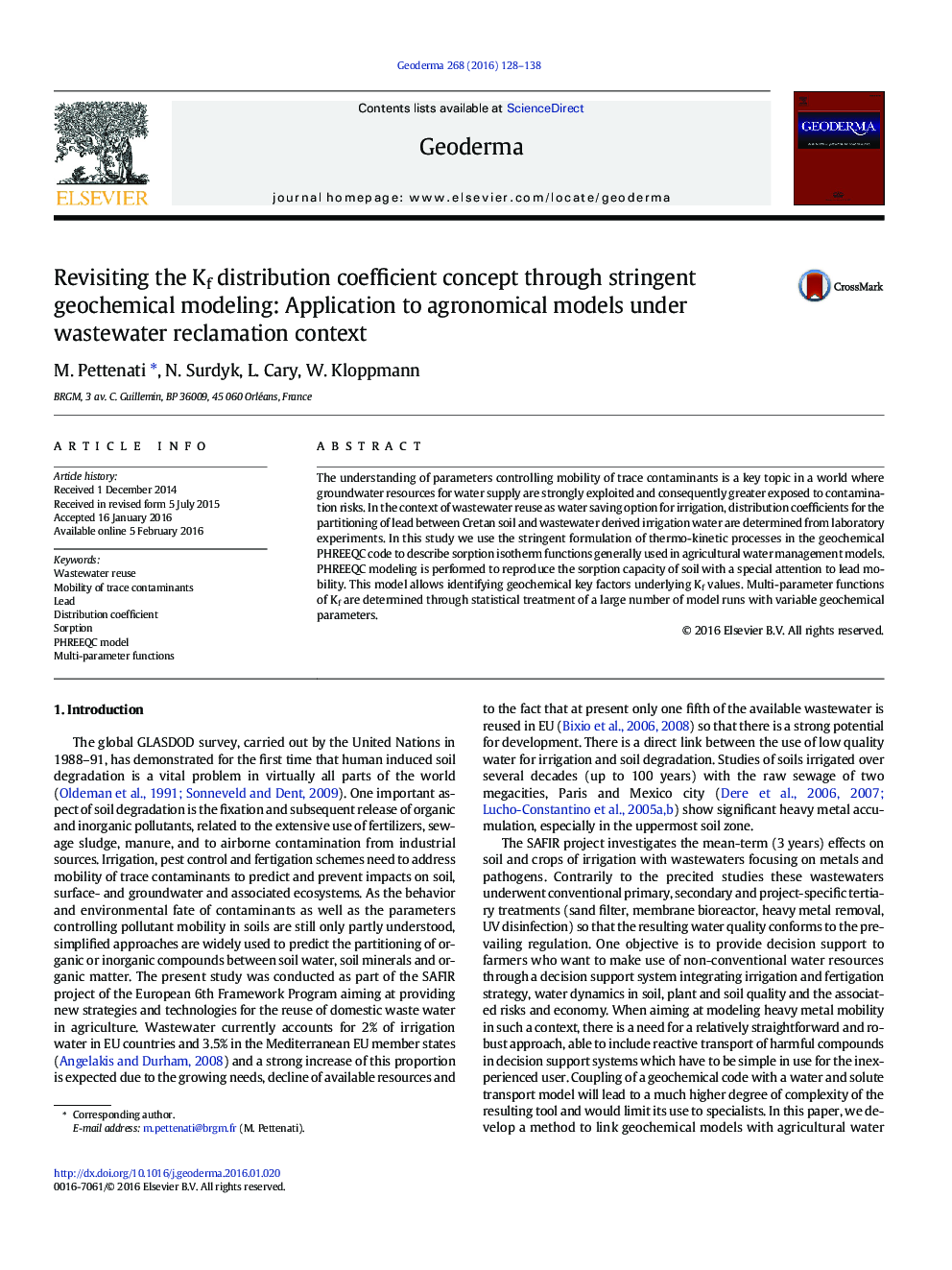| کد مقاله | کد نشریه | سال انتشار | مقاله انگلیسی | نسخه تمام متن |
|---|---|---|---|---|
| 4573034 | 1629449 | 2016 | 11 صفحه PDF | دانلود رایگان |
• Study of trace metal contaminant (Pb) in context of wastewater reuse for irrigation
• Modeling sorption capacity of soil using stringent formulation of thermo-kinetic processes in the geochemical PHREEQC code
• Identifying geochemical key factors underlying Freundlich distribution coefficient (Kf) values.
• Identify by statistical treatment multi-parameter functions of Kf that can be directly implemented in agronomical models
The understanding of parameters controlling mobility of trace contaminants is a key topic in a world where groundwater resources for water supply are strongly exploited and consequently greater exposed to contamination risks. In the context of wastewater reuse as water saving option for irrigation, distribution coefficients for the partitioning of lead between Cretan soil and wastewater derived irrigation water are determined from laboratory experiments. In this study we use the stringent formulation of thermo-kinetic processes in the geochemical PHREEQC code to describe sorption isotherm functions generally used in agricultural water management models. PHREEQC modeling is performed to reproduce the sorption capacity of soil with a special attention to lead mobility. This model allows identifying geochemical key factors underlying Kf values. Multi-parameter functions of Kf are determined through statistical treatment of a large number of model runs with variable geochemical parameters.
Journal: Geoderma - Volume 268, 15 April 2016, Pages 128–138
